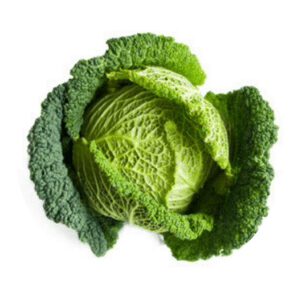How to grow organic Strawberries in a Greenhouse?
Strawberries are a beloved fruit that can be enjoyed in a variety of ways, from fresh off the vine to baked into pies and jams.
Growing your own strawberries can be both rewarding and delicious, but it can also present challenges when it comes to weather and pests.
One way to overcome these obstacles is by growing strawberries in a greenhouse.
In this article, we will share our top tips for successfully growing strawberries in a greenhouse.
Strawberry Greenhouse Menu
Choose the Right Varieties
When it comes to growing strawberries in a greenhouse, choosing the right varieties of strawberry is crucial for success.
Everbearing and day-neutral varieties are known to perform better in controlled environments and are thus well-suited for greenhouse cultivation.
Everbearing strawberries produce fruit multiple times throughout the growing season, while day-neutral strawberries are more consistent with their fruit production, providing a steady harvest over an extended period.
Both types of strawberry plants thrive in the stable conditions provided by greenhouses, where temperature and humidity levels can be carefully managed.
In addition to everbearing and day-neutral varieties, there are also several other factors to consider when selecting strawberry plants for greenhouse cultivation.
Pay attention to factors such as disease resistance, yield potential, and flavor profile when selecting your plants.
By taking these variables into consideration during the selection process, you can ensure that your greenhouse-grown strawberries will be healthy, abundant and delicious!
Provide Ample Sunlight
One of the most important factors in growing strawberries in a greenhouse is providing ample sunlight.
The location of your greenhouse plays a crucial role in this regard.
Choose a spot that receives maximum sunlight exposure throughout the day, ideally facing south or southeast. This will ensure that your strawberry plants receive at least six hours of direct sunlight daily.
In addition to positioning your greenhouse correctly, you can also use reflective materials to enhance light absorption.
Install reflective panels or paint the interior walls with white or silver paint to maximize natural light reflection.
You can also use grow lights as an alternative or supplement to natural light, especially during darker winter months when daylight hours are shorter.
Remember that too much direct sunlight can be harmful to strawberry plants as well and may cause leaf scorching or drying out of the soil, so monitor and adjust accordingly based on your climate and location.
By providing ample sunlight through proper positioning and enhancing reflection through the use of materials or grow lights, you can create an optimal environment for healthy strawberry growth in your greenhouse.
Optimal Temperature Control
Maintaining optimal temperature control in a greenhouse is crucial when it comes to growing strawberries.
The ideal temperature range for strawberries during the day is between 60-75 F (15-24 C). This range allows for proper growth and development of the plants, resulting in healthy yields. At night, slightly cooler temperatures are recommended to avoid stressing the plant.
It’s essential to avoid extreme temperature fluctuations inside the greenhouse as it can have adverse effects on strawberry productivity.
Extreme heat or cold can cause stress, which leads to poor yields and even death of the plants. Installing a ventilation system that helps regulate temperature and humidity levels inside the greenhouse can help maintain an optimal environment for strawberry cultivation.
Maintaining optimal temperature control is vital when growing strawberries in a greenhouse.
Keeping daytime temperatures between 60-75 F (15-24 C) and slightly cooler nighttime temperatures will ensure proper growth and development of plants while avoiding stress from extreme fluctuations in temperature.
A well-designed ventilation system can help regulate these conditions consistently throughout the year, resulting in healthy yields of delicious strawberries harvest after harvest!
In a greenhouse, strawberries grow, Amidst the warmth and gentle glow, Fragrant fruit in plump arrays, Unimpeded by nature’s rays. No frost nor hail can make them falter, Protected well, they’re sure to alter, A bounty for every season, From an indoor garden to reason.
Chappy The Gardener
Proper Ventilation
Proper ventilation is a crucial factor in growing strawberries in a greenhouse.
Good air circulation helps to prevent the development of fungal diseases by reducing humidity levels that can promote their growth.
Overcrowding, excessive watering, and poor drainage also contribute to high humidity levels, which can be avoided through proper ventilation.
The use of fans is one way to ensure good air circulation within the greenhouse.
Fans help to distribute fresh air throughout the greenhouse, which is essential for plant growth and development.
For optimal results, fans should be placed at strategic locations within the greenhouse to ensure maximum airflow.
Another way to promote proper ventilation within the greenhouse is through opening windows and doors as necessary. This helps in controlling temperature and humidity levels while allowing fresh air into the structure.
Ensuring proper ventilation ultimately leads to healthy strawberry plants with improved yields and reduced risk of fungal diseases that could hinder your harvest efforts.
Use High-Quality Soil
One of the most important factors to consider when growing strawberries in a greenhouse is the quality of soil.
For optimal growth, prepare soil that is rich in organic matter and well-draining. This will prevent water from pooling around the roots and causing rot, which can be a common problem for strawberries.
Strawberries prefer slightly acidic soil with a pH range of 5.5-6.5. To achieve this, consider using a mix of compost, peat moss, and perlite when preparing your soil.
Compost provides valuable nutrients for the plants while peat moss helps retain moisture and improve drainage. Perlite is an additive that improves soil structure and allows for better air circulation around the plant’s roots.
By using high-quality soil in your greenhouse strawberry garden, you can ensure healthy growth and bountiful harvests all season long.
Remember to regularly test the pH levels of your soil to make any necessary adjustments throughout the growing process.
Adequate Watering
One of the most important factors in successfully growing strawberries in a greenhouse is adequate watering.
Strawberries require consistent moisture to thrive, but overwatering can be detrimental to their health.
To ensure your plants are getting the right amount of water, keep the soil evenly moist without letting it become waterlogged.
Drip irrigation or a soaker hose are ideal watering methods for greenhouse strawberries. These systems allow for slow and steady moisture delivery directly to the roots, which helps prevent overwatering and minimizes the risk of fungal diseases like root rot.
It’s also important to monitor your plants regularly and adjust your watering schedule as needed based on weather conditions and other factors that may affect soil moisture levels.
Overall, taking care with your watering routine can have a big impact on the health and productivity of your greenhouse strawberry plants.
By providing consistent, appropriate levels of moisture throughout their growth cycle, you’ll be setting them up for success and ensuring a bountiful harvest come summertime.
Implement Mulching
One of the key factors in growing healthy strawberries in a greenhouse is to ensure proper moisture levels.
By implementing mulching, you can help retain moisture around the base of your plants and reduce the need for frequent watering.
Organic mulch, such as straw or wood chips, is an excellent option as it breaks down over time and adds nutrients to the soil.
In addition to retaining moisture, mulch also helps suppress weeds that can compete with your strawberry plants for water and nutrients. This allows your strawberries to have more resources available for growth and development.
Finally, mulch can help regulate soil temperature by keeping it cooler in hot weather and warmer during cooler periods.
When applying mulch around your strawberry plants, be sure to leave a small gap between the stem and the mulch layer to prevent rotting.
You’ll want to apply enough mulch (around 2-3 inches) to adequately cover the soil but not so much that it becomes excessively wet or compacted.
With proper application, organic mulching will give you healthier strawberry plants with improved yields!
Pruning and Training
Pruning and training are two essential practices that can help you grow healthy and abundant strawberry plants in your greenhouse.
Pruning involves removing any runners or excess foliage from the plant to redirect its energy into fruit production. This process not only helps to increase fruit yield but also improves air circulation, which can prevent diseases.
Another important aspect of growing strawberries in a greenhouse is training the plants to grow vertically using trellises or hanging baskets.
This method maximizes space utilization by allowing you to grow more plants within a limited area.
Vertical growth also makes it easier to access the fruits, leading to less damage and waste.
When training your strawberry plants, it’s crucial to start early in their growth cycle and provide support as they mature.
Using stakes or trellises will keep the plants upright while their roots develop and strengthen.
Additionally, pruning should be done regularly throughout the growing season, especially during fruiting periods when excess foliage may be draining vital nutrients away from the developing berries.
By implementing these two techniques, you’ll be able to produce healthy and flavorful strawberries that are sure to please any palate!
Pollination Assistance
Pollination is a crucial step in the strawberry growing process.
While bees are the primary pollinators, they may have limited access to your greenhouse.
That’s where manual pollination comes in.
By using a small brush or gently shaking the plants, you can ensure that each flower receives the necessary amount of pollen.
When manually pollinating strawberries, it’s important to be gentle and avoid damaging the delicate flowers or fruit.
Use a soft-bristled brush, such as a paintbrush or makeup brush, and lightly touch each flower in turn. This will transfer pollen from one flower to another and encourage fruit development.
In addition to manually pollinating strawberries, you can also try placing bee-attracting plants around your greenhouse or introducing bumblebees into the space for natural pollination assistance.
With proper care and attention to pollination needs, you can enjoy healthy strawberry plants and delicious fruit year-round in your greenhouse.
Nutrient-Rich Fertilization
When growing strawberries in a greenhouse, the use of nutrient-rich fertilizers is crucial to the plant’s growth and yield.
Organic fertilizers, such as compost or well-rotted manure, provide essential nutrients for healthy plant growth.
These types of fertilizers also help to improve soil structure, water retention, and promote beneficial microorganisms in the soil.
However, it’s important not to over-fertilize your strawberry plants as it can lead to excessive foliage growth instead of fruit production.
Over-fertilization can also result in chemical buildup that can harm both the plants and the environment.
To avoid this issue, follow instructions on fertilizer packages carefully and use only what is recommended for your specific type of plant.
Applying nutrient-rich organic fertilizers like compost or well-rotted manure is necessary when growing strawberries in a greenhouse. Be mindful not to over-fertilize your plants as it can lead to undesirable results.
With proper care and attention with regards to fertilizer use, you’ll be able to enjoy a bountiful harvest of delicious strawberries from your greenhouse garden.
Pest Management
Once the strawberry plants are established in the greenhouse, it is important to monitor for any potential pest problems.
Common pests include aphids, mites, and slugs.
Aphids are small insects that suck the sap from plants and can quickly multiply if left unchecked.
Mites are even smaller than aphids and can cause damage by feeding on plant tissues.
Slugs are another common pest that can damage both leaves and fruits.
To control these pests, it is important to take appropriate measures based on the severity of the infestation.
For mild infestations, introducing beneficial insects like ladybugs can be an effective solution.
Ladybugs feed on aphids and other small insects while avoiding damaging the plants themselves.
For more severe infestations or for those who prefer not to introduce additional insects into their greenhouse environment, organic pest control methods may be a better option.
This may include using insecticidal soap or neem oil sprays that target specific pests without harming beneficial insects or humans consuming the strawberries grown in your greenhouse.
By monitoring for pests regularly and taking appropriate action when necessary, you can ensure healthy strawberry plants and a bountiful harvest in your greenhouse setting.
Disease Prevention
Proper air circulation is crucial to preventing common strawberry diseases in a greenhouse.
Make sure that your greenhouse has sufficient ventilation, such as fans or vents, to allow for air movement and prevent stagnant pockets of air where diseases can thrive.
Additionally, avoid overcrowding your plants by giving them enough space between each other. This will promote better airflow and help prevent the spread of disease.
Overhead watering can lead to powdery mildew or gray mold on strawberry plants. Instead, opt for drip irrigation or watering at the base of the plant to keep leaves dry and reduce humidity levels in the greenhouse.
Be sure not to overwater your strawberries either, as excess moisture can create ideal conditions for disease growth.
If you do notice any infected plants in your greenhouse, promptly remove them from the area and dispose of them properly to prevent further spread of disease.
Regularly inspecting your plants for signs of disease is important in catching potential issues early on before they become more difficult to manage.
By following these tips for disease prevention, you’ll be well on your way to growing healthy and thriving strawberries in a greenhouse setting.
Harvesting
Regular harvesting is an essential practice when growing strawberries in a greenhouse.
Harvesting ripe strawberries promptly encourages the continuous production of fruit.
When berries are left on the plant, they can either become overripe or start to rot, which can attract pests and spread diseases throughout the greenhouse.
It’s best to harvest strawberries when they have reached their full color and size. This usually occurs about 4-6 weeks after flowering. The fruit should be firm and fully colored with no signs of green or white areas remaining.
If there are any damaged or diseased berries, they should be removed from the plants immediately to prevent further spread.
Harvesting strawberries can be done by gently pulling them off the plant using your fingers or scissors.
Be sure not to damage any surrounding foliage or flowers during this process as it may affect future yields.
By practicing regular harvesting techniques, you’ll ensure that your strawberry plants remain healthy and productive throughout the growing season in your greenhouse.
Seasonal Care
When growing strawberries in a greenhouse, it is important to adjust the conditions according to seasonal changes.
During hot summer months, it is crucial to increase ventilation by opening windows and doors or using fans to circulate air. This will prevent overheating and ensure that the plants receive adequate airflow.
On the other hand, during colder winter periods, additional insulation may be necessary to maintain optimal temperatures for strawberry growth.
This can be achieved by adding insulation layers to the walls and roof of the greenhouse or using heaters to maintain a consistent temperature.
It is also important to monitor humidity levels in the greenhouse throughout the year.
High humidity can lead to fungal diseases and pest infestations while low humidity can cause dehydration in plants.
By adjusting care according to seasonal changes, you can create ideal growing conditions for your strawberries and maximize their yield.
Enjoy the Fruits of Your Labor
Once you have successfully grown your strawberries in a greenhouse and they are ready for harvest, it’s time to enjoy the fruits of your labor.
Strawberries are best consumed when fully ripe and their flavor is sweetest at this stage.
You can pick them as soon as they turn red or leave them on the plant for a few more days to get even sweeter.
One of the best ways to enjoy fresh strawberries is by sharing them with friends and family.
Pick a basket full of ripe strawberries and give them away as gifts or serve them during gatherings.
Your loved ones will appreciate the effort you put into growing these delicious berries.
Another way to savor your strawberry harvest is by using them in homemade recipes such as pies, jams, or smoothies.
There are endless possibilities when it comes to incorporating fresh strawberries into your cooking routine.
Experiment with different recipes until you find one that suits your taste buds and impresses others with your culinary skills!
In conclusion, growing strawberries in a greenhouse is an excellent way to extend the growing season and produce sweet, juicy berries year-round.
With the right equipment and techniques, it’s possible to create an ideal growing environment that will provide you with a bountiful harvest.
Whether you’re looking to start a small hobby farm or scale up production for commercial purposes, a greenhouse can be a valuable tool for any strawberry grower.
So why not try your hand at greenhouse gardening today?
With a little bit of effort and some careful planning, you’ll soon be enjoying fresh, delicious strawberries all year long!
Click To Grow
Helps Us Grow – Share If You Like



















